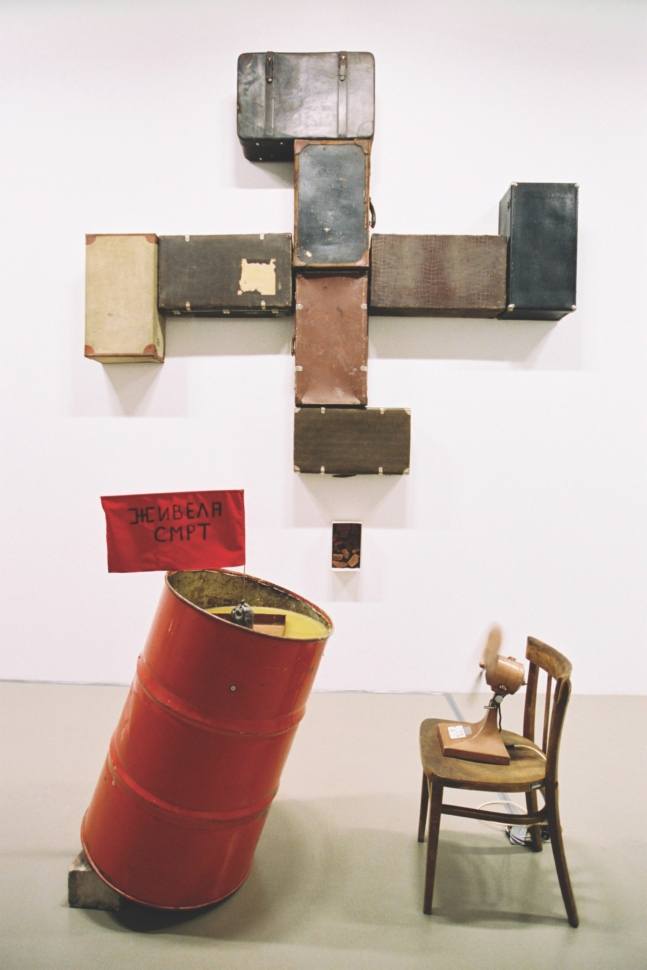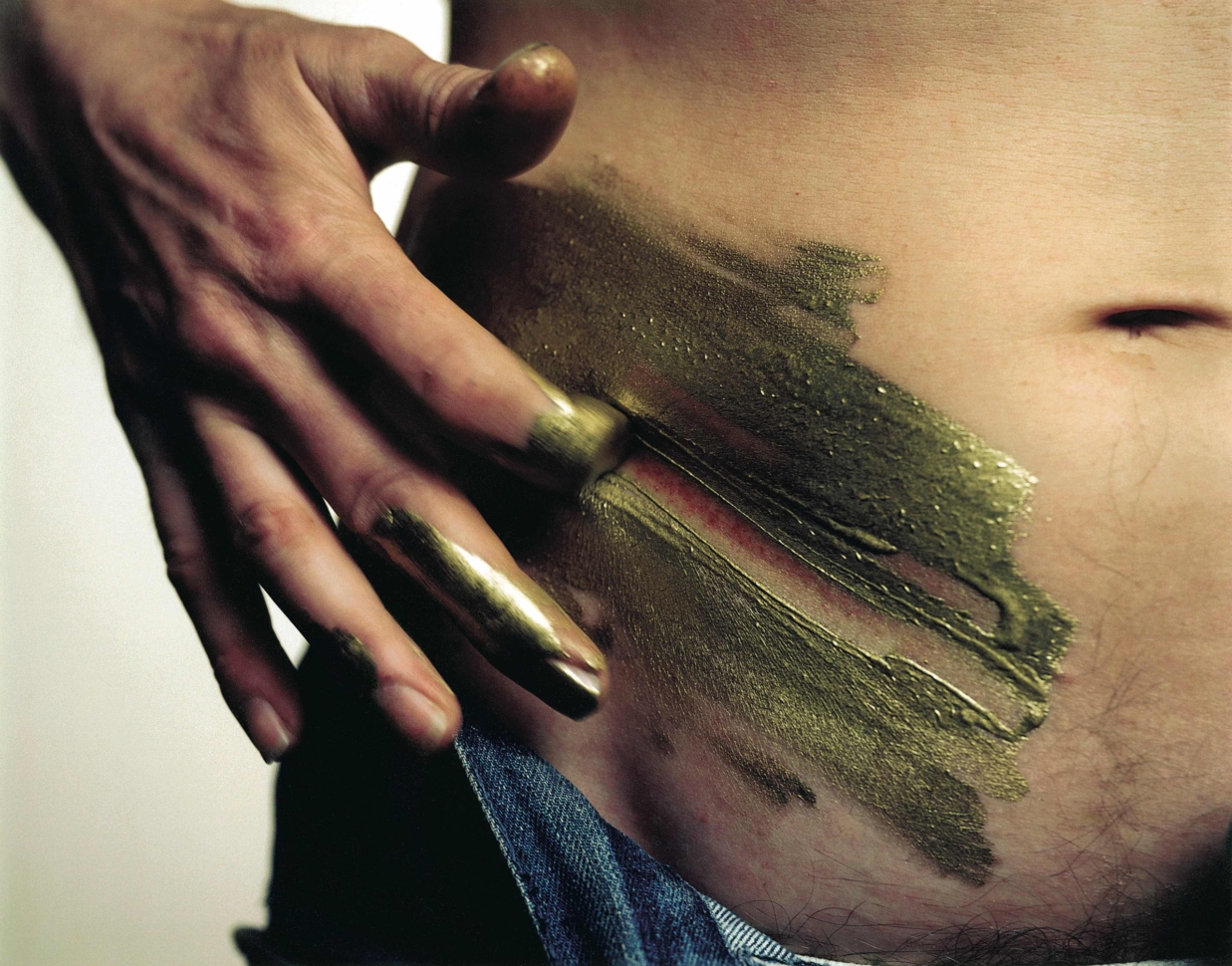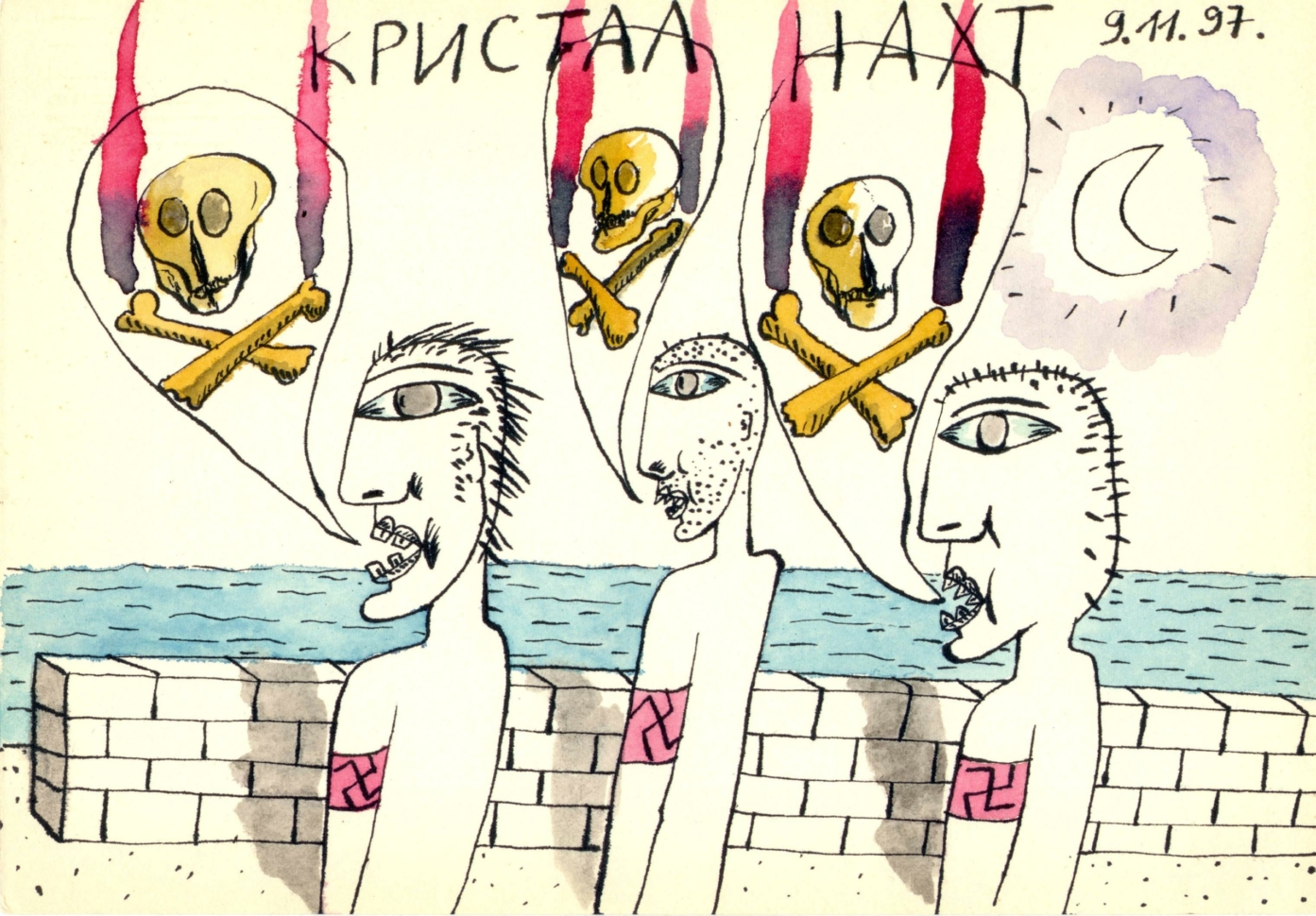Raša Todosijević, One of the Children of the Revolution Ondřej Vojtěchovský
In the second half of the 1960s, Belgrade became an extraordinary place on the then map of Europe, attracting the attention of the cultural, artistic and intellectual worlds in both East and West.
Yugoslavia, independent of the Soviet bloc, was developing a distinct and, as it seemed at the time, much freer system of so-called self-managed socialism. Although Tito’s regime also had its dissidents, such as the former high-ranking official Milovan Djilas, and imprisoned many of its political opponents, it allowed considerable creative freedom, especially during the 1960s. Within the relatively broad framework defined by Marxist ideology, there was room for artistic experimentation and provocative exploration of the boundaries of what was politically permissible.
The conflict between Stalin and Tito, which erupted in 1948, resulted in the detachment of Yugoslavia from the Soviet orbit of power and ideology. In an attempt to distinguish themselves from the Soviet type of socialism, the Yugoslav communists embarked on a path of political experimentation aimed at returning the socialist project to its emancipatory and free-thinking content and ridding it of the silt of Stalinist deformation. This trend also affected the field of art and culture. Already in the early 1950s, socialist realism was rejected in Yugoslavia. Space was opened for modern artistic movements and artists were given more freedom to express their critical attitudes towards the existing reality. Isolated from the Soviet bloc from the time of the rupture, Yugoslavia began to orient itself towards the West. Information and impulses were exchanged relatively freely, and Yugoslavia was not only a recipient of them, but increasingly became a distinctive and innovative centre in the eyes of the world public in a number of fields, in philosophy, film, literature and the visual arts. Yugoslavia thus naturally participated in global trends that most of the socialist countries of the Soviet bloc struggled to keep up with. Yugoslavia also had the advantage over the Eastern bloc countries of allowing its citizens, as early as in the late 1950s, to travel freely, to study at Western universities and even to stay in these countries for prolonged periods of time and then return.
A group of philosophers around the Zagreb-based Praxis magazine, such as Predrag Vranicki, Rudi Supek and Gajo Petrović, helped to shape the international debate in the field of Marxist theory, subjecting to analysis and critique both Western societies and Leninist-Stalinist power practices, the manifestations of which even Tito’s Yugoslavia could not get rid of, despite its proclaimed liberalisation. The Korčulan Summer School, organised by the Praxis circle, brought together philosophers from both sides of the divided world. Yugoslav literature also received a favourable response in global terms. Members of the post-war generation joined the success of Miroslav Krleža and Ivo Andrić, who won the Nobel Prize in 1963. In their novels, Dobrica Ćosić, Antonije Isaković and Branko Ćopić broke taboos about the partisan resistance and the early Stalinist phase of Yugoslav socialism. Even slightly younger authors, such as Miodrag Bulatović and Mirko Kovač, experimented with literary form. The so-called Black Wave directors dominated the film industry. Aleksandar Petrović was successful at international festivals with his films Three (1965) and The Feather Gatherers/I Even Met Happy Gypsies (1967). Živojin Pavlović’s When I’m Dead and Gone and The Rats Woke Up (both 1967) held up an unflattering mirror to the socialist reality of the time by observing the miserable lives of people on the margins of society. Another Black Wave director, Dušan Makavejev, took an even more provocative approach, combining, with some exaggeration, Marxism, psychoanalysis and personal intimacy with the language of “objective” science in an avant-garde cinematic language (Love Affair, or the Case of the Missing Switchboard Operator, 1967). Unlike in the countries of the Soviet bloc, where modernism had to struggle with the dominant socialist realism during the period of destalinisation, expression and abstraction in art, used to celebrate the victorious revolution, had already become mainstream in Yugoslavia in the 1950s. Young artists set themselves against them, especially those with politically provocative content, as was the case with the painter Mića Popović.
In Yugoslavia, as in other socialist countries, the tendency to provoke and experiment was motivated by a desire for greater freedom of thought and creation. In Yugoslavia, however, this tendency was quite clearly anchored in the existing left-wing project of the second half of the 1960s. Critics among artists and intellectuals pretended to take the regime at its word and demanded that it fulfil its promises, i.e. that socialism should bring both social justice and the attainment of the freedom of the human individual. Yugoslavia was swept by a student revolt in 1968, which found its strongest expression at the university in the capital. As in the countries of Western Europe, this movement grew out of the radical left intellectually. It criticised the existing regime as the rule of the “red bourgeoisie”. It attacked the privileges of the new social elite and persistent or even entirely new forms of social inequality, as well as manifestations of authoritarianism and the suppression of freedom of expression.
But Tito’s regime soon neutralised the movement. It used the lesson of 1968 to turn away from the liberal trend and towards a reinforcement of authoritarian modes of governance and a conservative turn in both ideology and culture. There was also outright persecution, as in the case of director Lazar Stojanović, whose highly provocative 1971 film Plastic Jesus was soon banned and its author sentenced to three years in prison. Similarly, Dušan Makavejev’s equally provocative film W.R.: Mysteries of the Organism (1971) was also banned. Makavejev and Želimir Žilnik, another Black Wave director, subsequently left to work abroad.
The intellectual climate of the late 1960s and the rise and failure of the 1968 student movement eventually gave rise to the generation of artists to which Raša Todosijević belongs. He, along with Marina Abramović, Era Milivojević and others, formed a group in 1969 that operated out of the Student Cultural Centre, a surviving product of the previous “revolutionary” year. On the domestic scene, these new conceptual artists represented an extreme alternative, which the official structures definitely did not favour, manifesting their attitude not through direct bans or persecution but through a lack of financial and existential support. Nevertheless, during the conservative turn, the group was able to create, travel, exhibit both in their own country and abroad, and maintain foreign contacts. In 1973, it presented itself successfully at the Edinburgh Art Festival, and the following year its members were able to invite Joseph Beuys, for example, to the April Meetings they organised in Belgrade. Todosijević, like Marina Abramović, spent more time abroad than in Yugoslavia from the mid 1970s, but quite legally, with a Yugoslav passport, with which one could travel to most countries in the world without a visa. Maintaining a critical distance from the domestic artistic, cultural and political establishment did not put you in the spotlight in Yugoslavia, but nor did it lead to internal or external emigration. In this respect, even in the conservative 1970s, the difference between Yugoslavia and, for example, Czechoslovakia was quite fundamental. This context also goes some way to explaining how Yugoslav artists like Raša Todosijević were able to participate in the most up-to-date developments in world art of the period.
In the 1990s, Todosijević and his circle took anti-war and anti-nationalist positions, again representing the opposition and the alternative, as they still do today. Today, however, it would be difficult for an artist from any of the countries of the former Yugoslavia to achieve the same level of global success. Yugoslavia, which had a respected status, has disappeared, and the successor states are again regarded by Western capitals as exotic and peripheral, where some incomprehensible horrors happened and are happening, with which the “developed world” has nothing to do. The West is interested in artists and authors who elaborate on Western stereotypes of the Balkans and, in a way, reinforce them. On the contrary, Todisijević, Marina Abramović or Slovenian band Laibach (also inspired by Todosijević) or the philosopher Slavoj Žižek became interesting not because they came from some “odd” country but because they dealt with general themes of the contemporary world.



